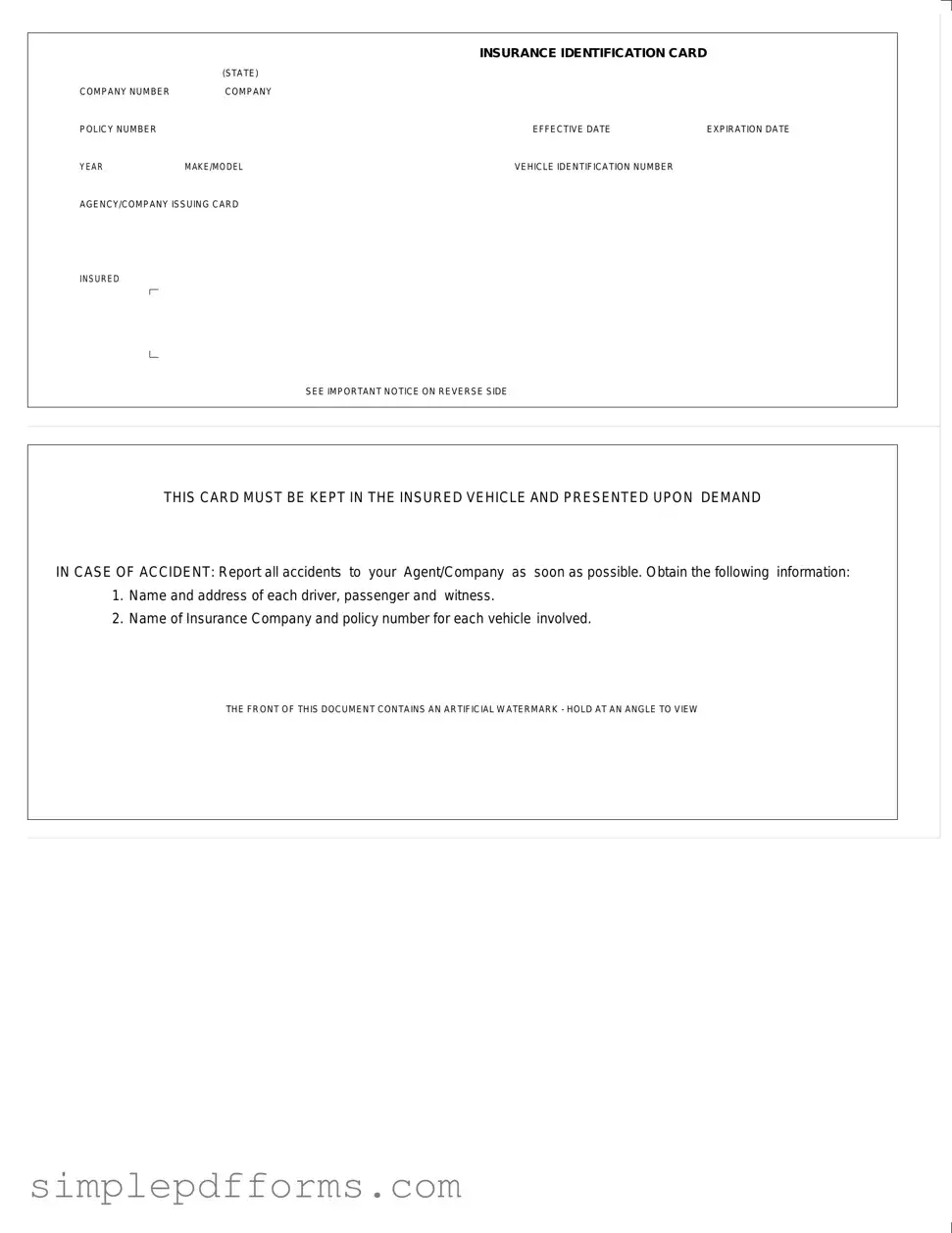Fill a Valid Auto Insurance Card Form
The Auto Insurance Card is an important document that provides proof of insurance coverage for a vehicle. This card includes vital information such as the policy number, effective dates, and vehicle details. It must be kept in the insured vehicle and shown upon request, especially in the event of an accident.
Open Auto Insurance Card Editor Now

